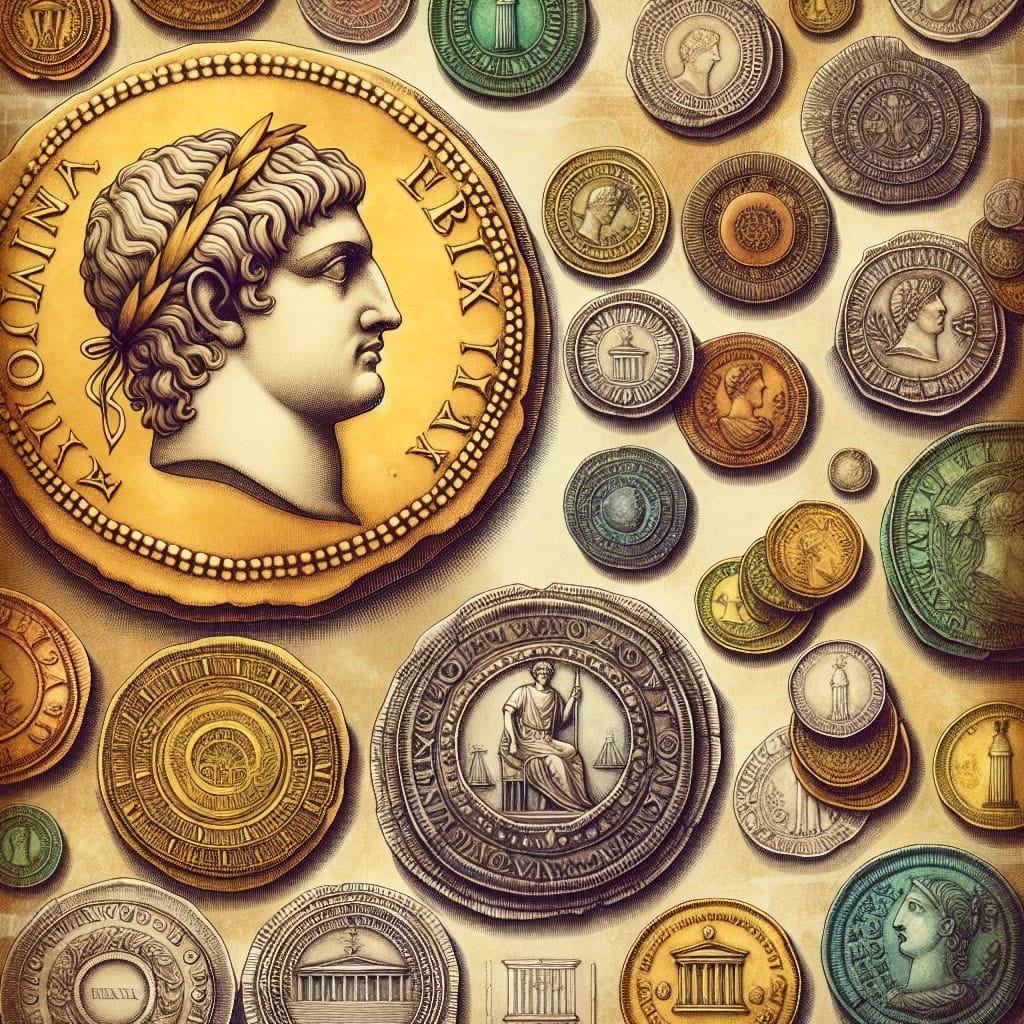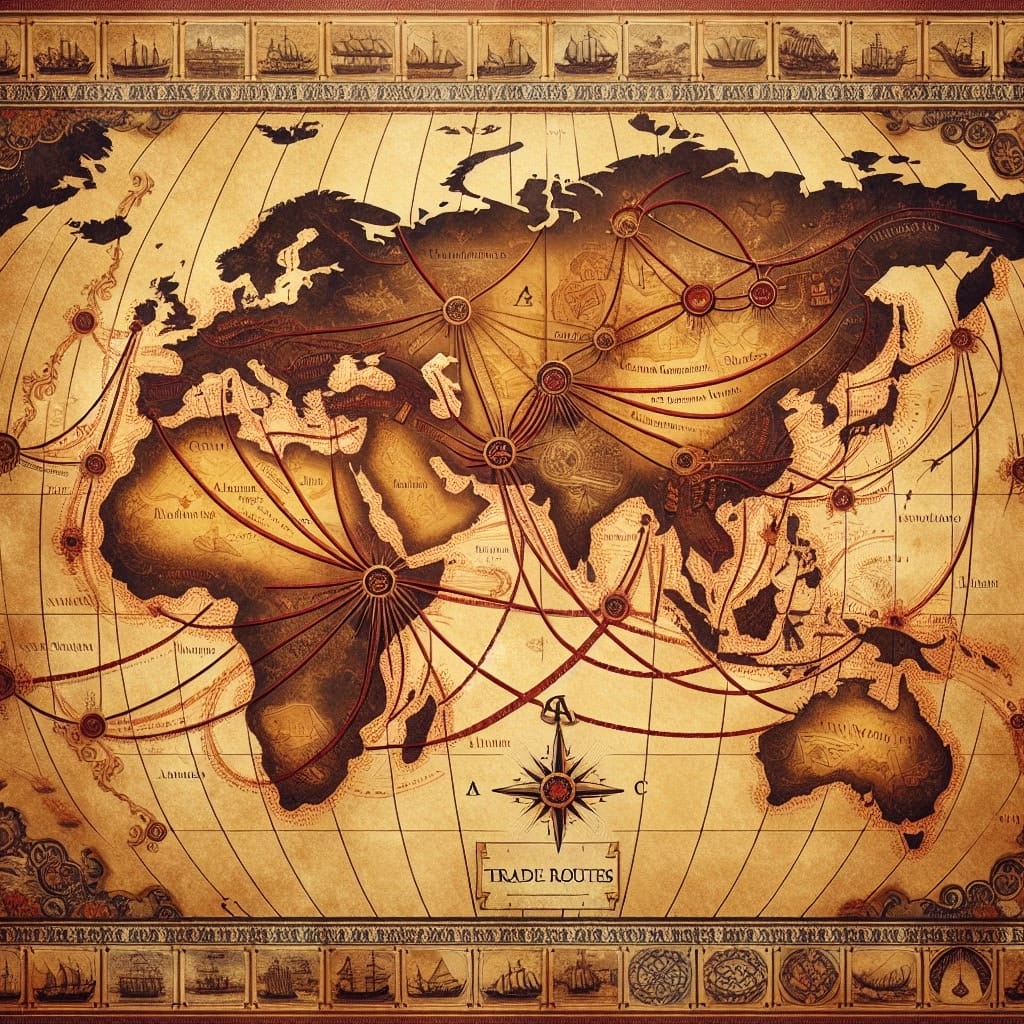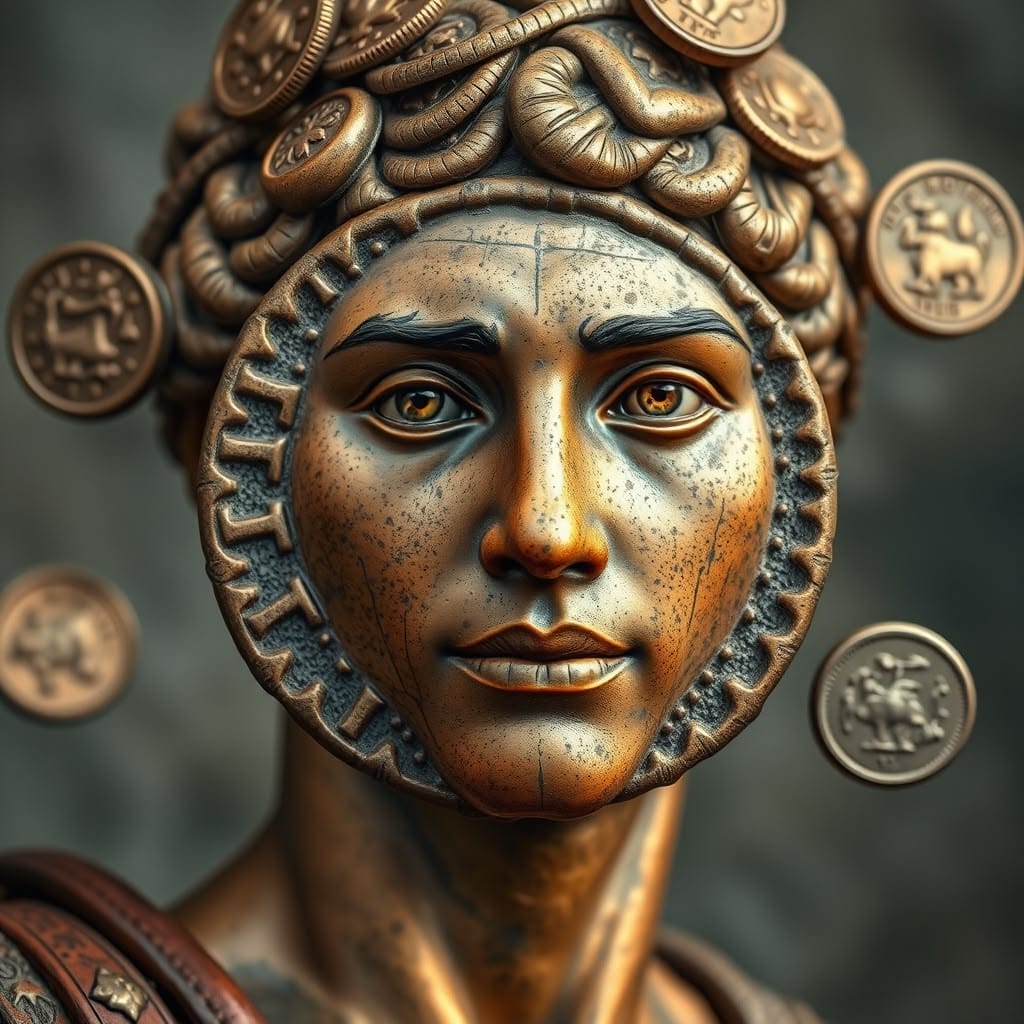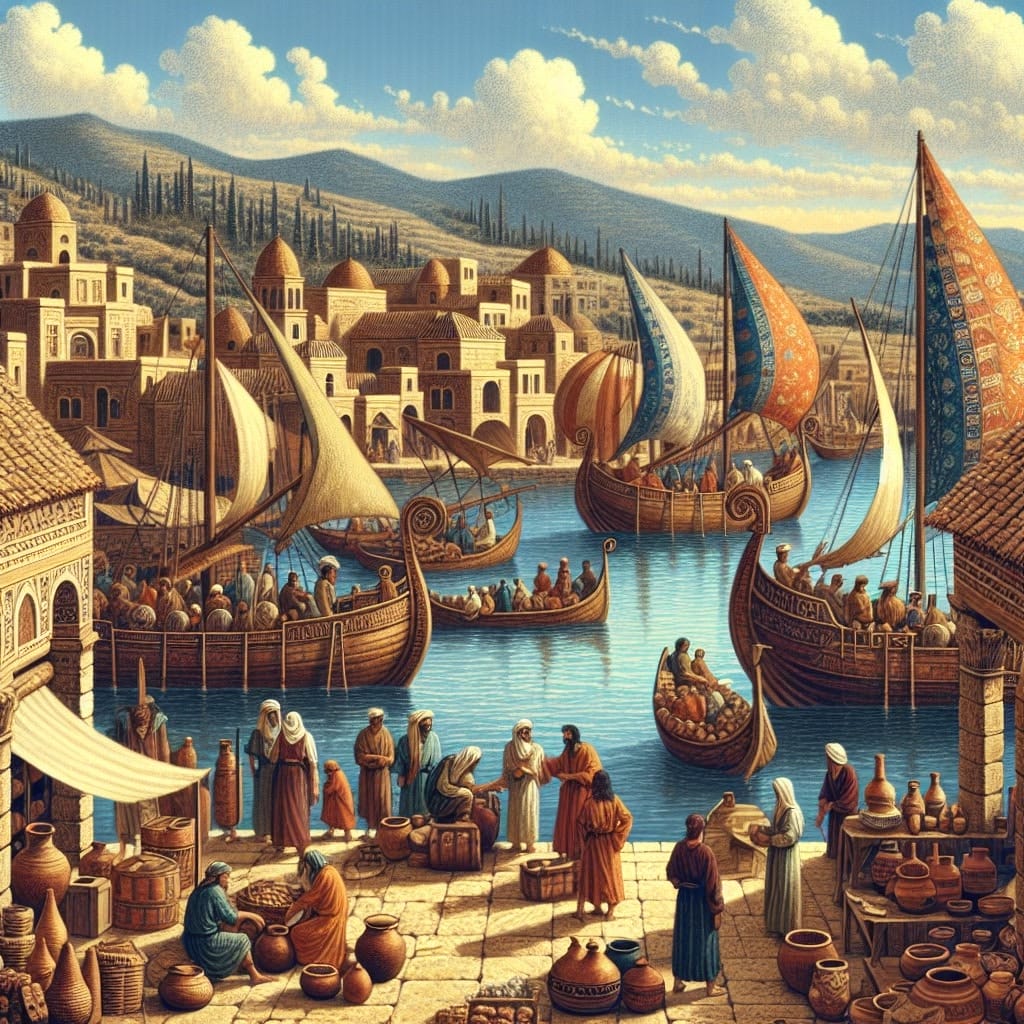The evolution of Roman coinage marks a pivotal development in ancient economic history. Originating in the late 4th century BCE, Roman coins, such as the silver denarius, became fundamental to the empire’s financial system. These coins were instrumental in transitioning from cumbersome barter systems to efficient monetary transactions.
Roman coinage played a crucial role in facilitating trade across vast territories. The standardized value of coins enabled seamless exchanges, thereby enhancing commercial activities and integrating regions into a cohesive economic network. Notably, coins also served as vehicles of propaganda, spreading the imagery of emperors and monuments, thus reinforcing political power and unity.
As the empire expanded, the circulation of Roman coins extended beyond its borders, underlining their significance in ancient trade networks. This widespread use not only boosted economic activity but also fostered cultural exchanges across diverse regions.
Historical Context of Roman Coins
The origins of Roman coinage trace back to the late 4th century BCE in Italy, marking a significant departure from the early Republic’s reliance on bronze weights, known as aes rude. The initial coins were small bronze pieces produced around 326 BCE and later followed by silver coins in the early 3rd century BCE, resembling Greek designs. The introduction of the silver denarius in 211 BCE, which became the cornerstone of Roman currency, underscored a shift toward a monetized economy.

Roman coins had a profound impact on ancient trade practices. They facilitated commercial exchanges within the expanding Roman Empire and beyond its borders, standardizing transactions across diverse regions. The widespread use of coins such as the denarius enabled Rome to integrate vast territories into its economic system, enhancing trade routes and promoting economic stability. Additionally, coinage served as a medium for political propaganda through the imagery of rulers like Julius Caesar and Augustus, further embedding Roman influence in trade networks.
Thus, the evolution of Roman coins not only reflects a transition from barter to a sophisticated monetary system but also highlights their pivotal role in reinforcing Rome’s economic and political dominance in ancient trade networks.
Circulation of Roman Coins
The circulation of Roman coins within the Empire was a multifaceted process, heavily influenced by trade, military campaigns, and regional economic policies. Merchants and traders facilitated the flow of coins through commercial exchanges, while soldiers introduced currency into newly conquered territories. This dynamic distribution was further diversified by local mints producing coins with regional characteristics, complementing the standardized currency minted in Rome.

Beyond the Empire’s borders, Roman coins found their way into distant lands, exemplifying their expansive reach. A remarkable hoard of nearly 3,000 Roman-era coins discovered near Herschbach, Germany, well beyond the Roman frontier, illustrates this phenomenon. These coins, primarily antoniniani minted in Cologne, highlight unexpected avenues of exchange, possibly involving trade with Germanic tribes or other forms of interaction. Such findings challenge existing understandings of ancient trade networks and hint at the complexities of cultural and economic exchanges beyond Roman influence.
In sum, Roman coins were not only central to economic integration within the Empire but also played a significant role in cross-cultural exchanges across ancient trade networks.
Materials and Minting Techniques
Roman coins were primarily composed of metals such as gold, silver, bronze, and copper. The choice of metal was significant, reflecting both the coin’s intended value and its role within the economy. Gold coins, known as aurei, were typically used for large transactions and state payments, while silver denarii and bronze coins were more common in everyday commerce. The antoniniani, a notable silver coin, further exemplifies the diversity in Roman coinage, playing a crucial role during the third century CE.

The minting techniques employed by the Romans were advanced for their time, involving a meticulous process of striking coins. Initially, metal blanks were cast, then heated and struck between engraved dies using hammers. This method allowed for detailed images and inscriptions, such as depictions of emperors and deities, which served both economic and cultural purposes. Centralized minting in Rome ensured standardization, while regional mints allowed for adaptations that met local demands.
These materials and processes not only facilitated the widespread use of coins but also supported the intricate trade networks throughout and beyond the Roman Empire, illustrating their pivotal role in ancient economic systems.
Economic Impact of Roman Coins
Roman coins were instrumental in the economic landscape of the Roman Empire, serving as the backbone for facilitating trade and sustaining the imperial budget. The introduction of standardized coinage such as the silver denarius enabled seamless exchange of goods and services, promoting commerce across diverse social strata. This coinage not only simplified transactions but also supported technological and commercial growth by allowing all social classes to engage in the economy.

Beyond the borders of the empire, Roman coins exerted a profound influence on regional economies. The robust monetary framework of Rome integrated vast territories into its economic system, promoting trade stability and cultural cohesion. The widespread acceptance of Roman currency in regions such as the Mediterranean reinforced economic interactions, allowing local economies to flourish through trade. Moreover, the trust and stability associated with Roman coins fostered economic resilience, enabling regions under Roman influence to thrive by participating in extensive trade networks.
Overall, Roman coins not only sustained the empire’s internal economy but also extended its economic reach, influencing regions far beyond its dominion and leaving a lasting legacy on international trade and monetary policies.
Roman Coins in the Silk Road
The role of Roman coins in the Silk Road trade networks was pivotal, serving as a medium of exchange that facilitated commercial interactions across vast distances. These coins were not merely currency but symbols of economic influence, aiding in the exchange of highly coveted goods such as spices and silk. The Roman demand for these commodities fostered a bustling trade that reached as far as India, evidenced by numerous Roman coin finds along the Indian coastline.
The circulation of Roman coins extended beyond the Indian subcontinent, penetrating overland routes into Central Asia and China. Archaeological discoveries of over 100 Roman coins on the Chinese mainland underscore the active economic exchanges between the Eastern Roman Empire and ancient China. This evidence highlights the far-reaching impact of Roman currency and its role in connecting disparate cultures along the Silk Road.
Ultimately, Roman coins served as more than just currency; they were conduits of cultural exchange and economic stability, leaving a lasting legacy on the trade networks that continued to thrive long after the fall of Rome.
Roman Coins in Northern Trade Routes
The northern trade routes of the Roman Empire, particularly those involving the Germanic tribes, highlight the extensive reach of Roman economic influence. Roman coins were instrumental in fostering trade with these tribes, acting as a stable medium of exchange that facilitated the barter of goods such as furs, amber, and slaves. This exchange was not merely transactional; it played a vital role in integrating the Germanic tribes into the broader Roman economy, thereby expanding the Empire’s commercial network.

Archaeological evidence supports the presence of Roman coins well beyond the traditional borders of the Empire. Excavations in regions such as modern-day Germany and Scandinavia have unearthed a considerable number of Roman coin hoards. These findings suggest a robust trade relationship between the Romans and the Germanic peoples, underpinned by the frequent use of Roman currency.
These archaeological discoveries not only shed light on the economic interactions between Rome and the Germanic tribes but also indicate the far-reaching influence of Roman monetary systems. They illustrate how Roman coins were more than mere currency; they were tools of diplomacy and integration, weaving diverse cultures into a unified economic tapestry.
Influence in Mediterranean Trade
The exchange with Mediterranean cultures was a cornerstone of Roman economic power, deeply intertwined with the circulation of Roman coins. These coins not only facilitated trade across the Mediterranean Sea but also served as a testament to the Roman Empire’s expansive reach. Roman coins were exchanged for goods such as olive oil, wine, and grain, which were staples of Roman life. This monetary system enabled the Romans to establish and maintain robust trade relationships with regions like Egypt, Greece, and North Africa, thereby securing a steady flow of essential goods into the empire.

Moreover, the circulation of Roman coins contributed significantly to cultural exchanges within the Mediterranean basin. Coins, often imprinted with the likenesses of emperors and deities, served as a medium for disseminating Roman culture and values. Through trade, these coins traveled far and wide, facilitating the spread of Roman art, language, and religious practices. As a result, the Roman influence permeated diverse cultures, fostering a shared cultural heritage that was instrumental in shaping the Mediterranean’s historical landscape. This is evident in the influx of Classical art and objects decorated with Roman motifs into various territories, highlighting the lasting impact of Roman trade networks.
Monetary Policies and Trade
The Roman Empire’s monetary policies were pivotal in shaping the extensive trade networks that spanned across Europe, Asia, and Africa. The Romans implemented a standardized currency system, which included coins such as the denarius, sestertius, and aureus. This uniformity facilitated trade by providing a reliable and widely recognized medium of exchange, crucial for transactions across diverse regions.

These policies not only bolstered domestic economic stability but also enhanced international trade. Roman coins, with their intricate designs and inscriptions, served as tools of economic influence. They were instrumental in establishing trust in commercial exchanges, as evidenced by their discovery along the Silk Road and in regions as far as India and China. The circulation of Roman currency along these routes facilitated the exchange of valuable goods such as spices and silk, which were highly coveted in the Roman Empire.
The enduring presence of Roman coins in these trade networks underscores their lasting impact, continuing to influence commerce even after the empire’s decline. This highlights the significant role of Roman monetary policies in fostering expansive and enduring trade relationships across ancient civilizations.
Cultural Diffusion Through Coinage
The circulation of Roman coins played a crucial role in fostering cultural exchanges across vast trade networks. These coins were adorned with intricate cultural symbols, including depictions of Roman deities, emperors, and significant historical events. Such imagery was not merely decorative but served as a medium for disseminating Roman cultural and political ideals to regions far beyond the Empire’s borders.
As Roman coins traveled along trade routes like the Silk Road, they introduced local cultures to Roman art and symbolism. This exchange is evident in archaeological finds, such as the discovery of Roman coins in China, which highlight the extent of cultural diffusion. The influx of classical motifs into local art and architecture in regions such as the Kushan territories underscores the influence Roman coins had on indigenous cultures.
Through this diffusion, Roman coins not only facilitated trade but also acted as agents of cultural transmission, enriching the local traditions with Roman elements. This contributed to a shared cultural heritage across diverse regions, leaving a lasting impact that extended well beyond economic transactions.
Archaeological Discoveries
Recent archaeological discoveries have significantly enhanced our understanding of Roman coinage and its role in ancient trade networks. One of the most notable finds is the Worcestershire Conquest Hoard, unearthed in central England. This discovery comprises 1,368 coins dating back to Emperor Nero’s reign, offering a glimpse into Roman economic practices on the Empire’s frontier. The majority of these coins are silver denarii, with one notable gold coin, suggesting diverse uses in both local and broader trade contexts.
The significance of such finds extends beyond their monetary value. They reveal the extent of Roman influence and trade dynamics, as these coins likely traveled through various routes, carried by Roman soldiers or merchants. Archaeological evidence of coins in distant lands uncovers the networks that connected the Roman Empire to far-flung regions, facilitating not only economic exchanges but also cultural interactions. For instance, discoveries along the Silk Road demonstrate how Roman coins helped establish trading connections and cultural exchanges with Eastern civilizations.
These findings underscore the intricate web of trade routes and cultural exchanges that Roman coinage enabled, reflecting its dual role as both economic currency and an agent of cultural diffusion.
Conclusion
The exploration of Roman coinage in ancient trade networks reveals their profound influence on economic and cultural exchanges. These coins, such as those found in the Worcestershire Conquest Hoard, not only served as currency but also as tools of cultural diffusion. Their widespread circulation both within and beyond the Roman Empire underscores their role in facilitating trade across diverse regions.
Their presence along routes like the Silk Road highlights the extent of Roman trade connections and the exchange of goods, ideas, and technologies. In essence, Roman coins were more than mere financial instruments; they were symbols of Rome’s expansive reach and its ability to connect distant cultures. As we continue to uncover these archaeological treasures, our understanding of ancient trade networks and the intricate role played by Roman coinage becomes ever more nuanced and insightful.
Frequently Asked Questions
When exploring the role of Roman coins in ancient trade networks, several common questions arise. One frequently asked question is: “Why were Roman coins significant in trade?” Roman coins were not only a medium of exchange but also a symbol of Roman authority and a means to facilitate economic transactions across vast distances. Their standardization made trade more efficient and predictable.
Another question often posed is: “Did Roman coins circulate beyond the Empire?” Indeed, Roman coins were found far beyond the borders of the Roman Empire, reaching regions as distant as India and China, as evidenced by archaeological discoveries along the Silk Road. This widespread circulation underscores their role in connecting diverse cultures.
Common misconceptions also need addressing. One such misconception is that all Roman coins were made of gold. In reality, most were silver denarii, with gold coins being rarer. For instance, the Worcestershire Conquest Hoard primarily comprised silver coins, with only one gold coin discovered.
Understanding these facets of Roman coins helps in appreciating their immense influence on ancient trade and cultural exchanges.

